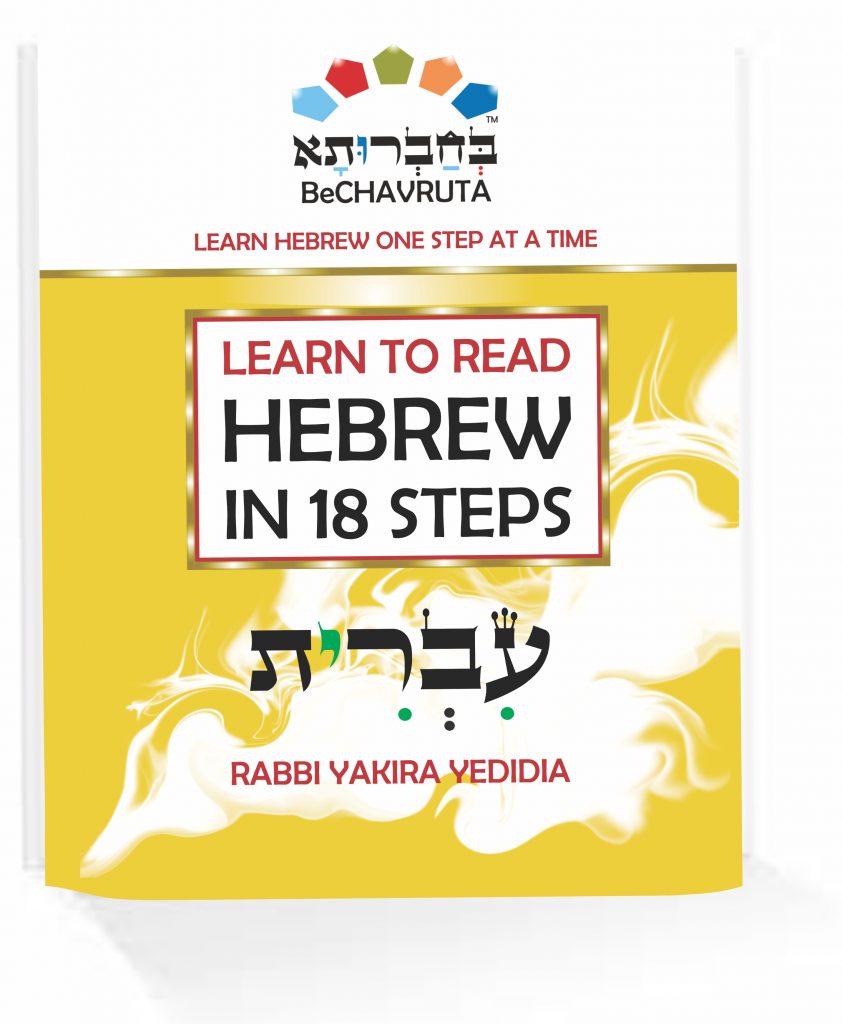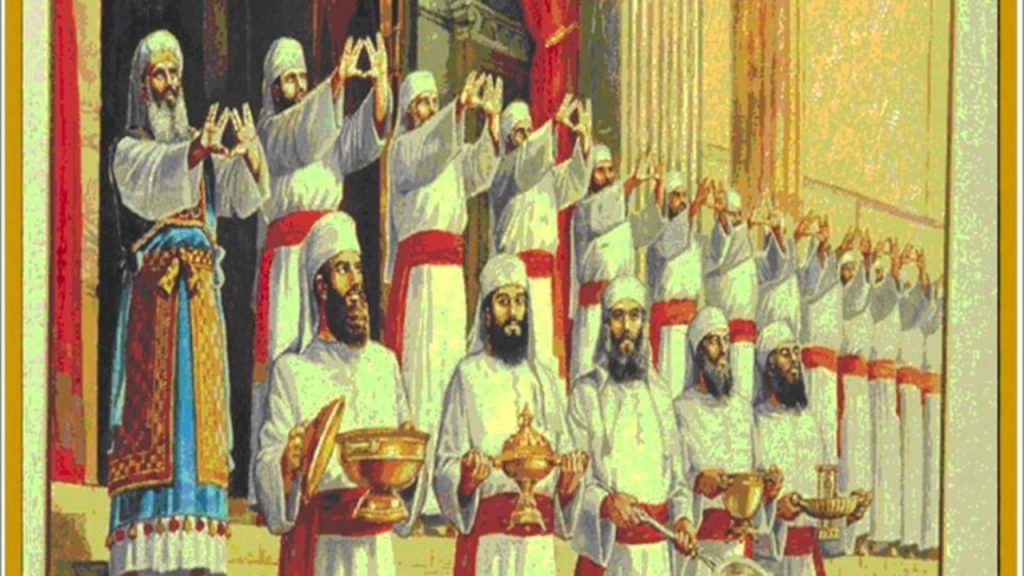In a nutshell
The Shabbat on which Parashat D’varim, “things” or “words,” is read is called Shabbat Chazon, a Shabbat of Vision, in referrence to the vision of the prophet Yeshayahu, which is described in this Haftarah.
The fifth and final book of the Torah, words, begins 37 days before Mosheh was to die, during the 40th year since the Exodus from Egypt. Unlike the previous four books of the Torah, Mosheh is the speaker in Deuteronomy. Mosheh begins his final words of instruction to the Children of Israel. According to the midrash, all 600,000 people, Kol Israel, heard Moses’ speech as if it were spoken directly to them. Focusing first on recounting their physical journey, reviewing the events that occurred during their 40 years journey from Egypt to Sinai, leaving Sinai, appointing leaders, Mosheh reviews the people’s reactions to the negative reports of the spies and the rebellion at Kadesh Barnea, the price they had to pay, the wilderness years, the defeat of their enemies Sichon and Og, the allotment for the tribes of Reuven, Gad and half of Menasheh. The appointment of Joshua to succeed him and in charge of leading the Israelite in the conquest of the Promised Land. Mosheh reiterates that the Land of Israel was allocated to the Israelite tribes.
Tisha B’Av
Parashat D’varim is always read on the Sabbath just before Tisha B’Av.
Tisha B’Av “the ninth of Av” is an annual fast day in Judaism, on which a number of disasters in Jewish history occurred, primarily the destruction of both Solomon’s Temple by the Neo-Babylonian Empire and the Second Temple by the Roman Empire in Jerusalem.
Tisha B’Av is regarded as the saddest day in the Jewish calendar and it is thus believed to be a day which is destined for tragedy.
The Talmud (Yoma 9b) teaches that one of the reasons for the destruction of the Temple was the sin of baseless hatred between Jews. Many times such hatred has its origins in forbidden forms of speech, such as gossip and painful words.
Proverbs 18:21 states, “Death and life are in the power of the tongue”
Socrates and the Triple filter test
One day, in ancient Greece, an acquaintance met the great philosopher Socrates and said, “Do you know what I just heard about your friend?”
“Hold on a minute,” Socrates replied. “Before telling me anything I’d like you to pass a little test. It’s called the Triple Filter Test.”
“Triple filter?”
“That’s right,” Socrates continued. “Before you talk to me about my friend, it might be a good idea to take a moment and filter what you’re going to say. That’s why I call it the triple filter test. The first filter is Truth. Have you made absolutely sure that what you are about to tell me is true?”
“No,” the man said, “actually I just heard about it and.”
“All right,” said Socrates. “So you don’t really know if it’s true or not. Now let’s try the second filter, the filter of goodness. Is what you are about to tell me about my friend something good?”
“No, on the contrary…”
“So,” Socrates continued, “you want to tell me something bad about him, but you’re not certain it’s true. You may still pass the test though, because there’s one filter left: the filter of usefulness. Is what you want to tell me about my friend going to be useful to me?”
“No not really …”
“Well,” concluded Socrates, “if what you want to tell me is neither true nor good nor even useful, why tell it to me at all?”
As Tisha B’Av draws near, it would be appropriate to use the days ahead to contemplate this lesson about the significance of our words and to attempt to rectify the sins which caused the Temple’s destruction.

ORDER RABBI YAKIRA NEW BOOK “LEARN TO READ HEBREW IN 18 STEPS”
2 Mitzvot in parashat D’varim
| 1. Not to appoint judges who are not familiar with judicial procedure Deut. 1:17 2. The judge must not fear a violent man in judgment Deut. 1:17 | ||
The 613 Mitzvot
The commandment of the tzitzit. The word tzitzit is related to the root word lehatzitz- to look, therefore a tzitzit is an object at which we look . In addition, the word tzitzit numerical value is 600. The tzitzit has 8 threads and 5 double knots in each corner (8+5=13), thus a tzitzit represents the 613 mitzvot in the Torah.
In The Torah there are 613 commandments, mitzvot, also known as the Law of Moses (תרי״ג מצוות, taryag mitzvot). The 613 mitzvot are first recorded in the 3rd century CE, when Rabbi Simlai mentioned it in a sermon that is recorded in Talmud Makkot 23b.
The 613 commandments include 248 “positive commandments”, to perform an act (mitzvot aseh), and 365 “negative commandments”, to abstain from certain acts (mitzvot lo taaseh). The negative commandments number 365, which coincides with the number of days in the solar year, and the positive commandments number 248, a number ascribed to the number of bones and main organs in the human body.
Though the number 613 is mentioned in the Talmud, its real significance increased in later medieval rabbinic literature, including many works listing or arranged by the mitzvot. The most famous of these was an enumeration of the 613 commandments by Maimonides, The Rambam.
Many of the mitzvot cannot be observed now, following the destruction of the Second Temple, although they still retain religious significance. According to one standard reckoning, there are 77 positive and 194 negative commandments that can be observed today, of which there are 26 commands that apply only within the Land of Israel. Furthermore, there are some time-related commandments from which women are exempt (examples include shofar, sukkah, lulav, tzitzit and tefillin). Some depend on the special status of a person in Judaism (such as kohanim), while others apply only to men or only to women. According to Rambam Organized by Parshah. based on Wikipedia and http://www.vaadrv.org/rambam613mitzvot.asp ONE BIG IMPORTANT NOTE WHEN USING THIS LISTING: This listing is not all inclusive. Rambam may site multiple sources for a mitzvah is his works but this list currently only gives one source for each mitzvah.
WOULD YOU LIKE TO READ HEBREW?
THE BEST TIME TO PLANT A TREE WAS 20 YEARS AGO. THE SECOND BEST TIME IS NOW!
Take your first step, and in as little as 9 hours of BeCHAVRUTA Crash Course Book, you will be able to Read Hebrew Fluently & Accurately like a Pro!

ORDER RABBI YAKIRA NEW BOOK “LEARN TO READ HEBREW IN 18 STEPS”
“Original, fun, and effective, this is a superb way to learn to read Hebrew.“- DENNIS PRAGER
“A clear, lucid and immensely helpful guide to learning Hebrew. Takes the reader by the hand and introduces the holy tongue in living color.“-RABBI DAVID WOLPE
“An instant classic! Rabbi Yakira has written a primer on Hebrew that is both enchanting & colorful. It is sure to capture the interest of students & magically introduce them to the Hebrew language!”-RABBI DR DAVID ELLENSON
The Priestly Blessing
Check out YedidYah “The Priestly Blessing” Birkat Hakohanim. Music by Rabbi Yakira Yedidia https://youtu.be/YNE11QdEMN0
יְבָרֶכְךָ יהוה, וְיִשְׁמְרֶךָ- May the LORD bless you and guard you
יָאֵר יהוה פָּנָיו אֵלֶיךָ, וִיחֻנֶּךָּ -May the LORD make His face shed light upon you and be gracious unto you
יִשָּׂא יהוה פָּנָיו אֵלֶיךָ, וְיָשֵׂם לְךָ שָׁלוֹם- May the LORD lift up His face unto you and give you peace
Yevarechecha Adonai, V’Yishmerecha
Ya’er Adonai Panav Eleycha, ViChoneka
Yisa Adonai Panav Eleycha, V’Yasem Lecha Shalom
(Number 6:24-26).
Check out YedidYah “The Priestly Blessing” Birkat Hakohanim. Music by Rabbi Yakira Yedidia https://youtu.be/YNE11QdEMN0
Check out YedidYah Psalm 96 “Yiram Hayam” Music by Rabbi Yakira Yedidia https://youtu.be/aTBD4i9nvXw

This blog article was inspired by chabbad.org, Sefaria.org, Wikipedia.org,

